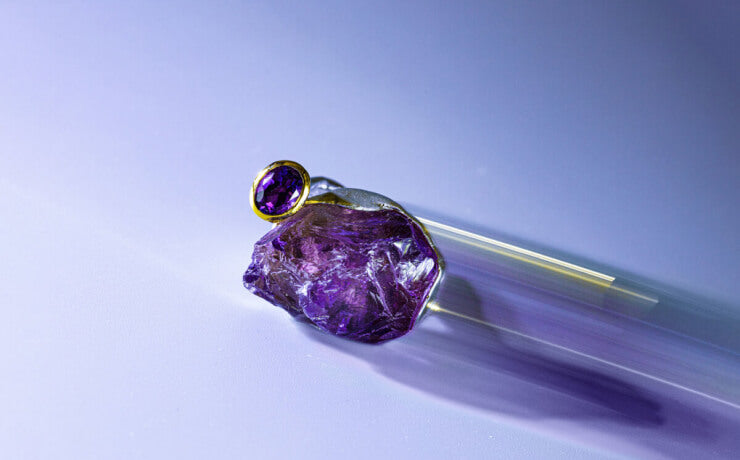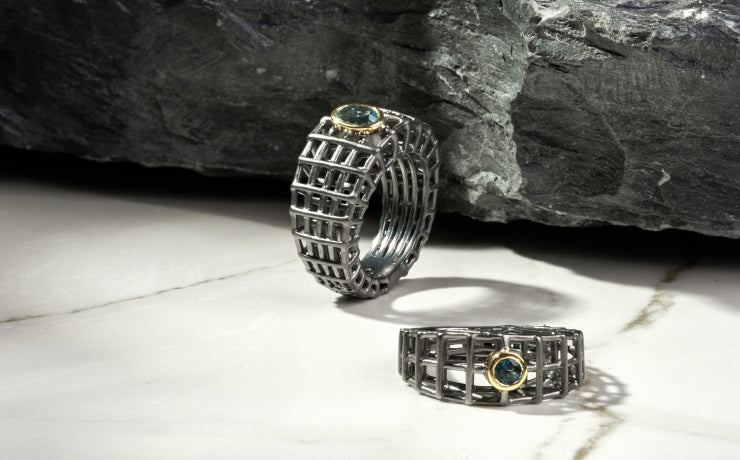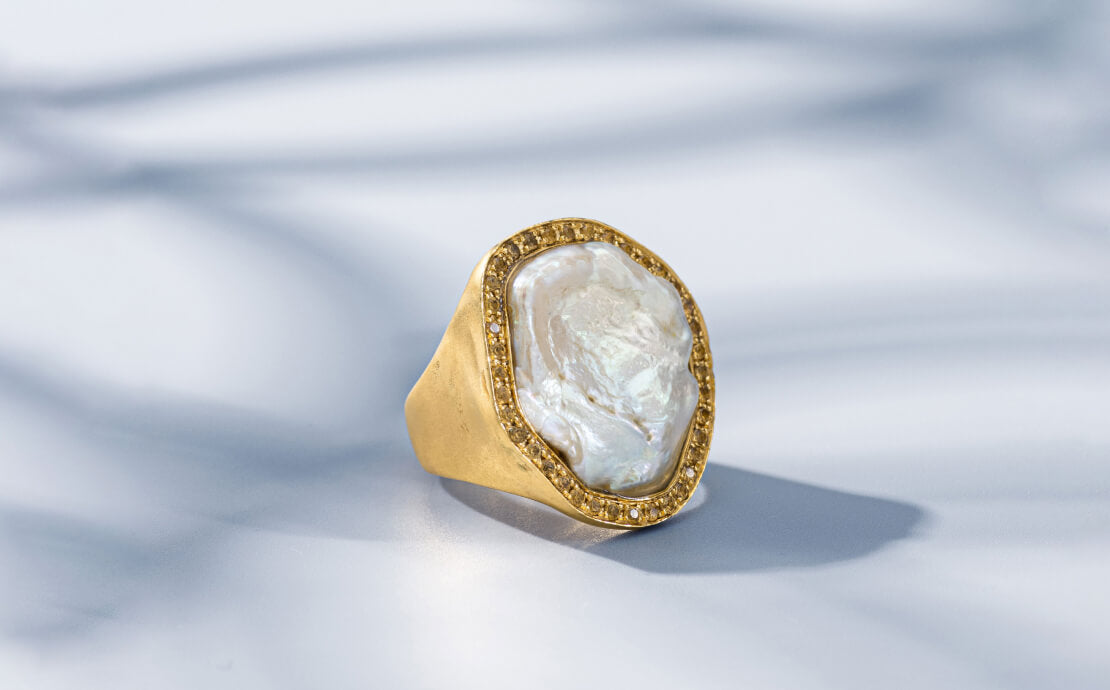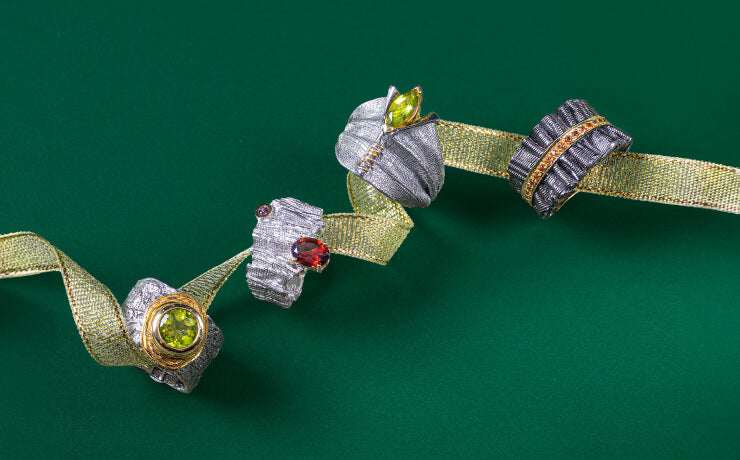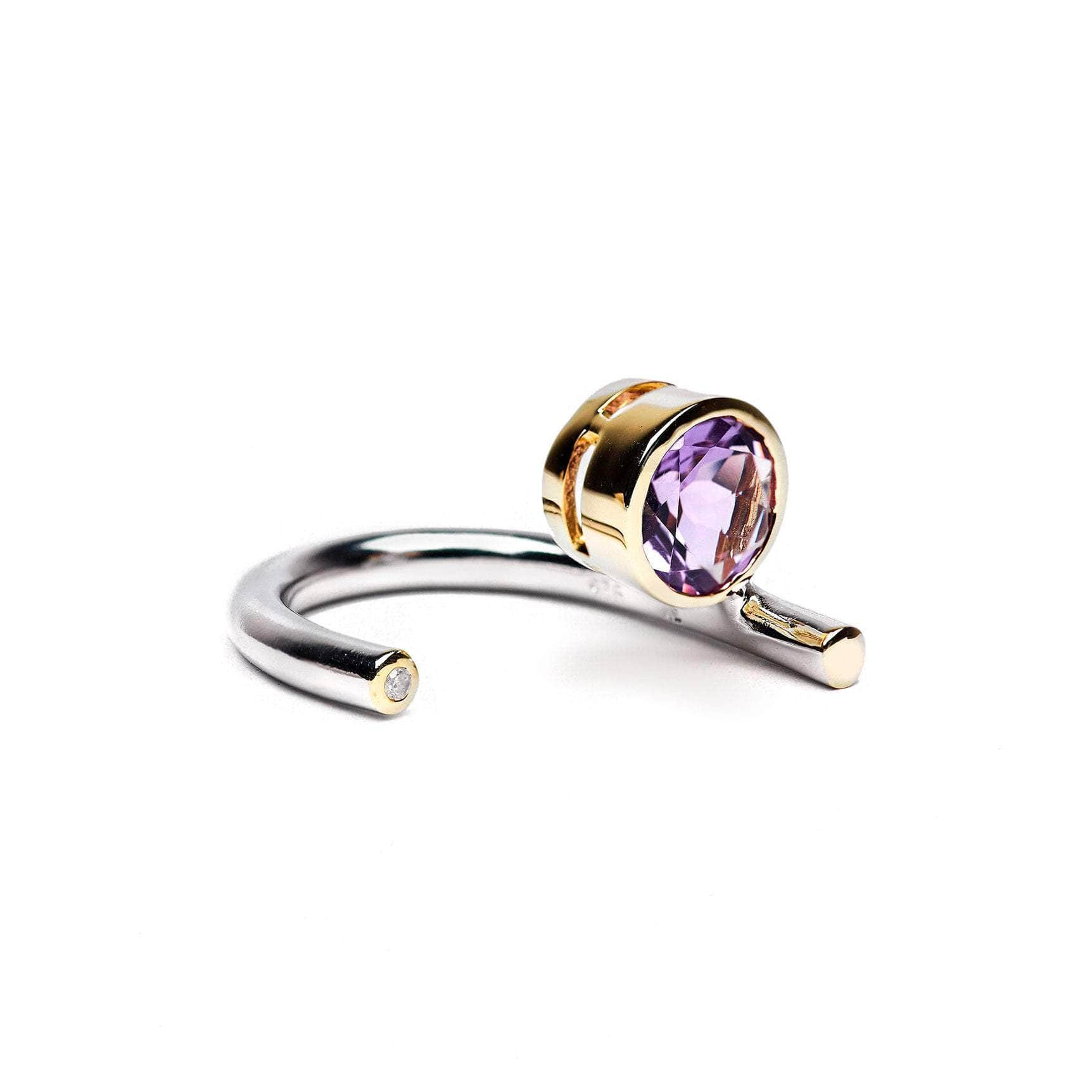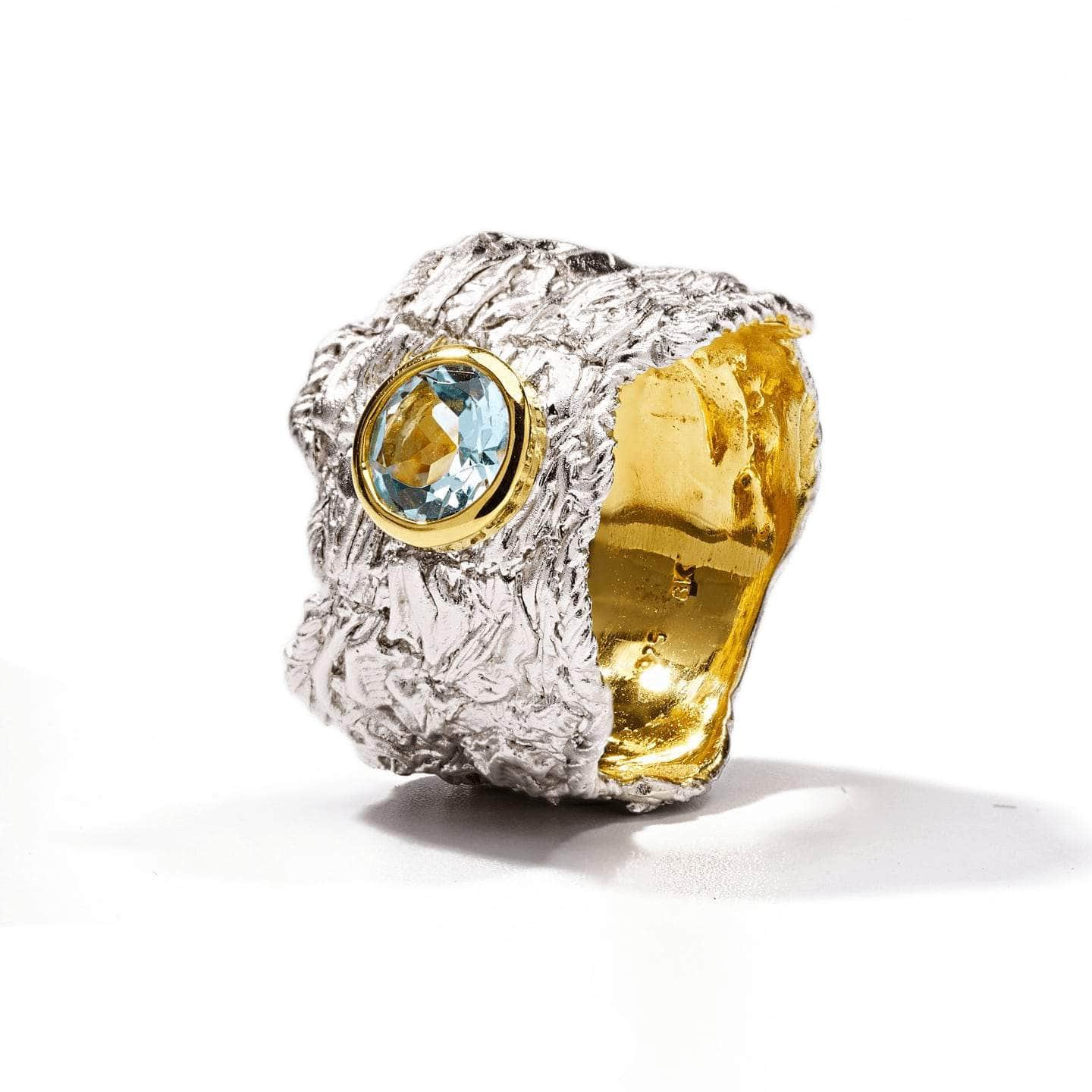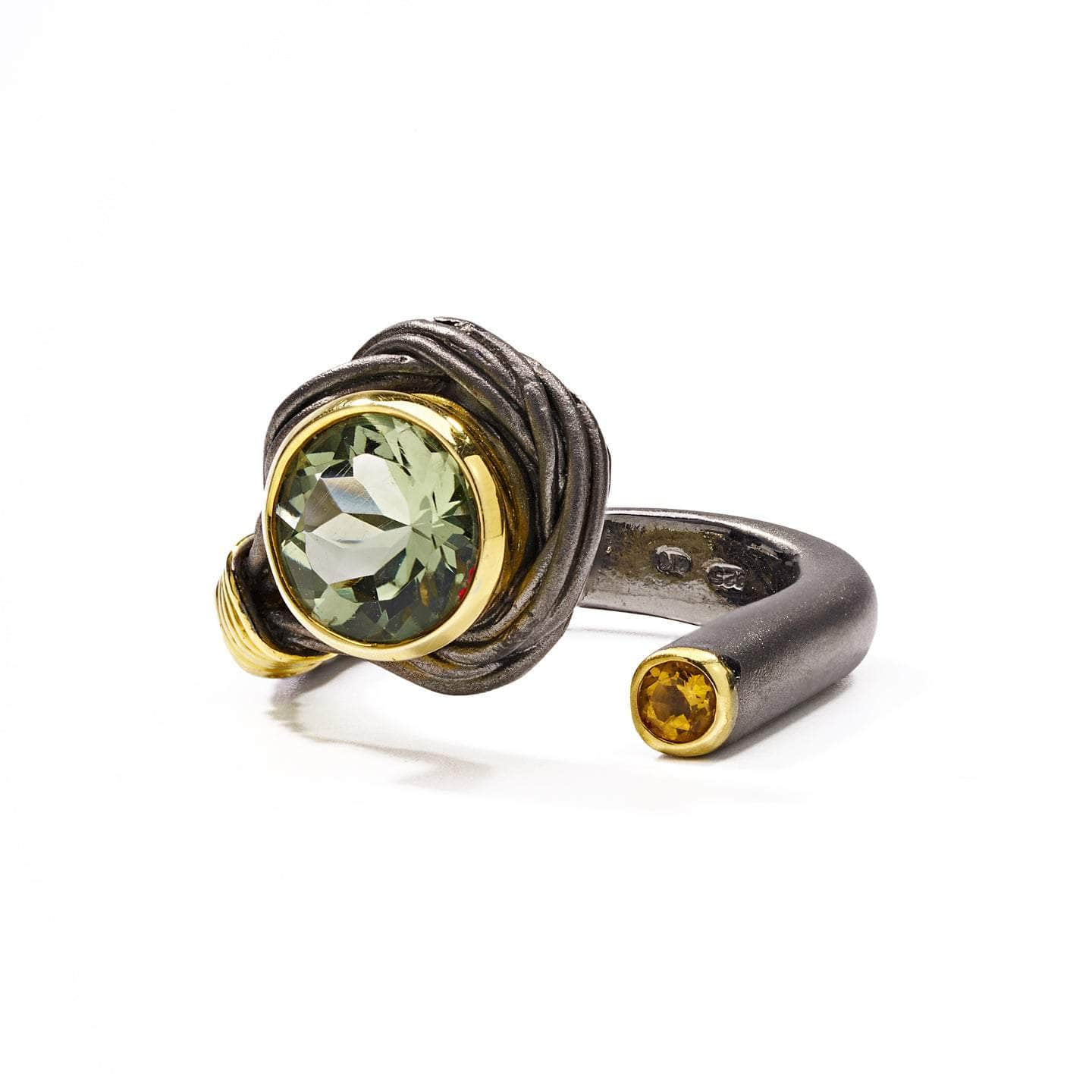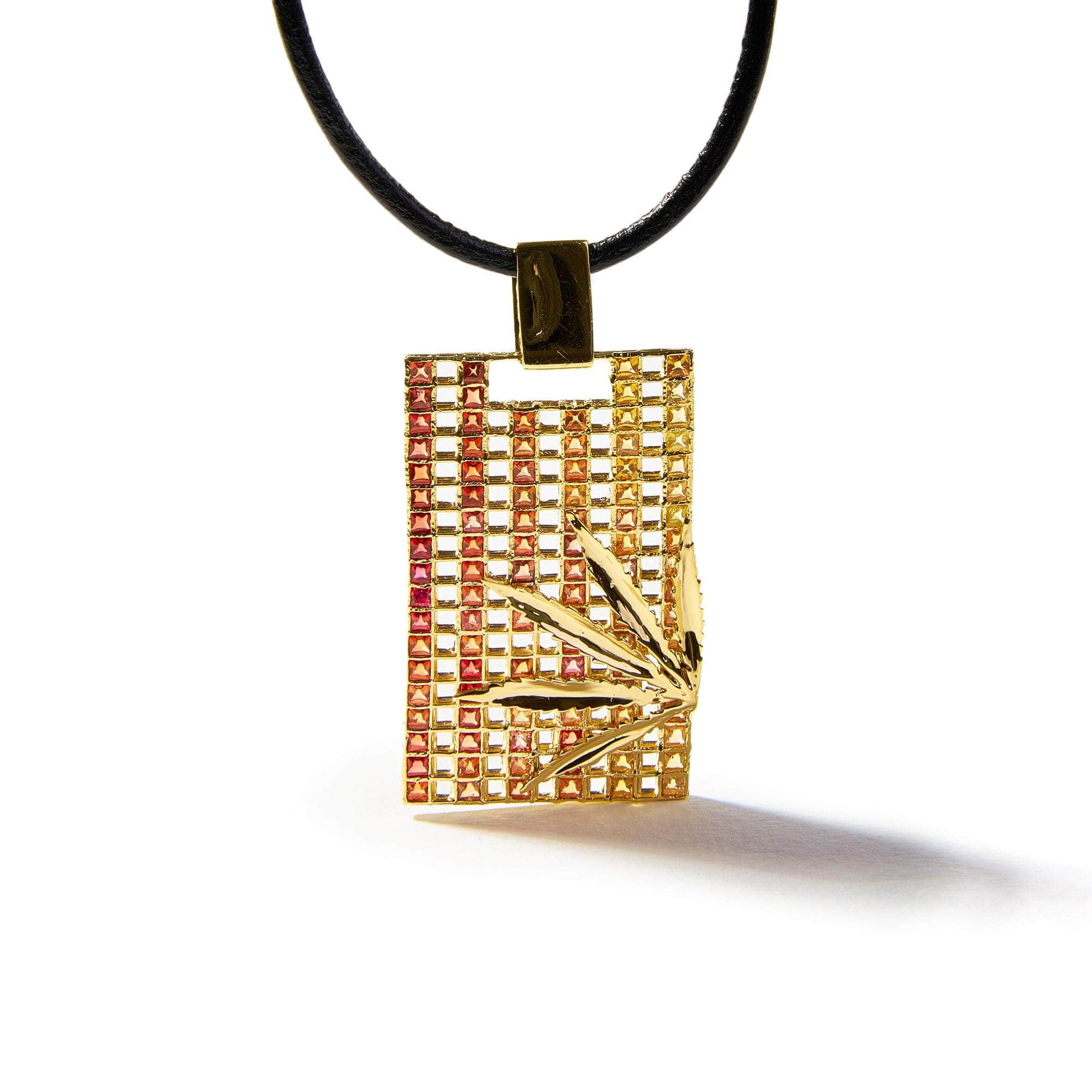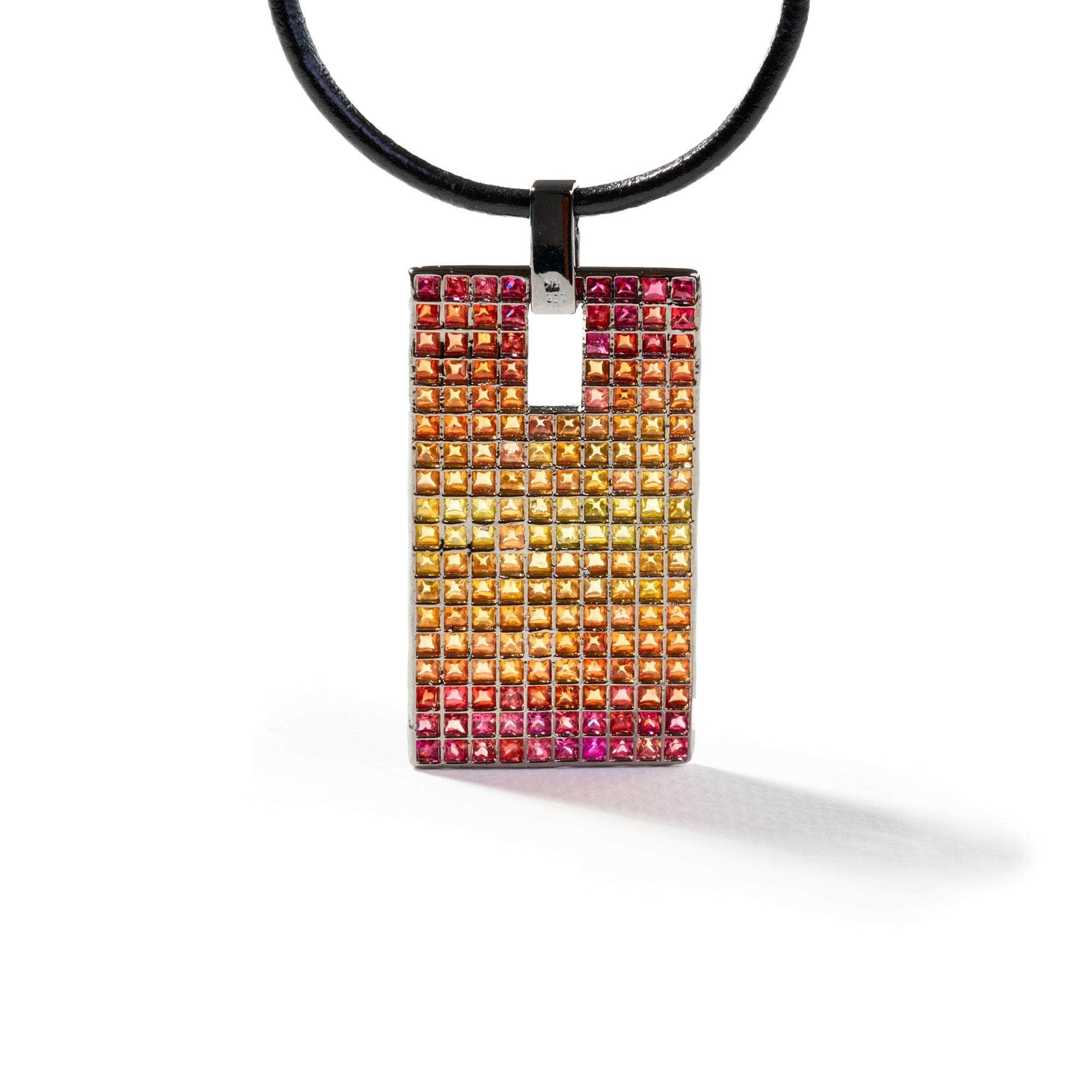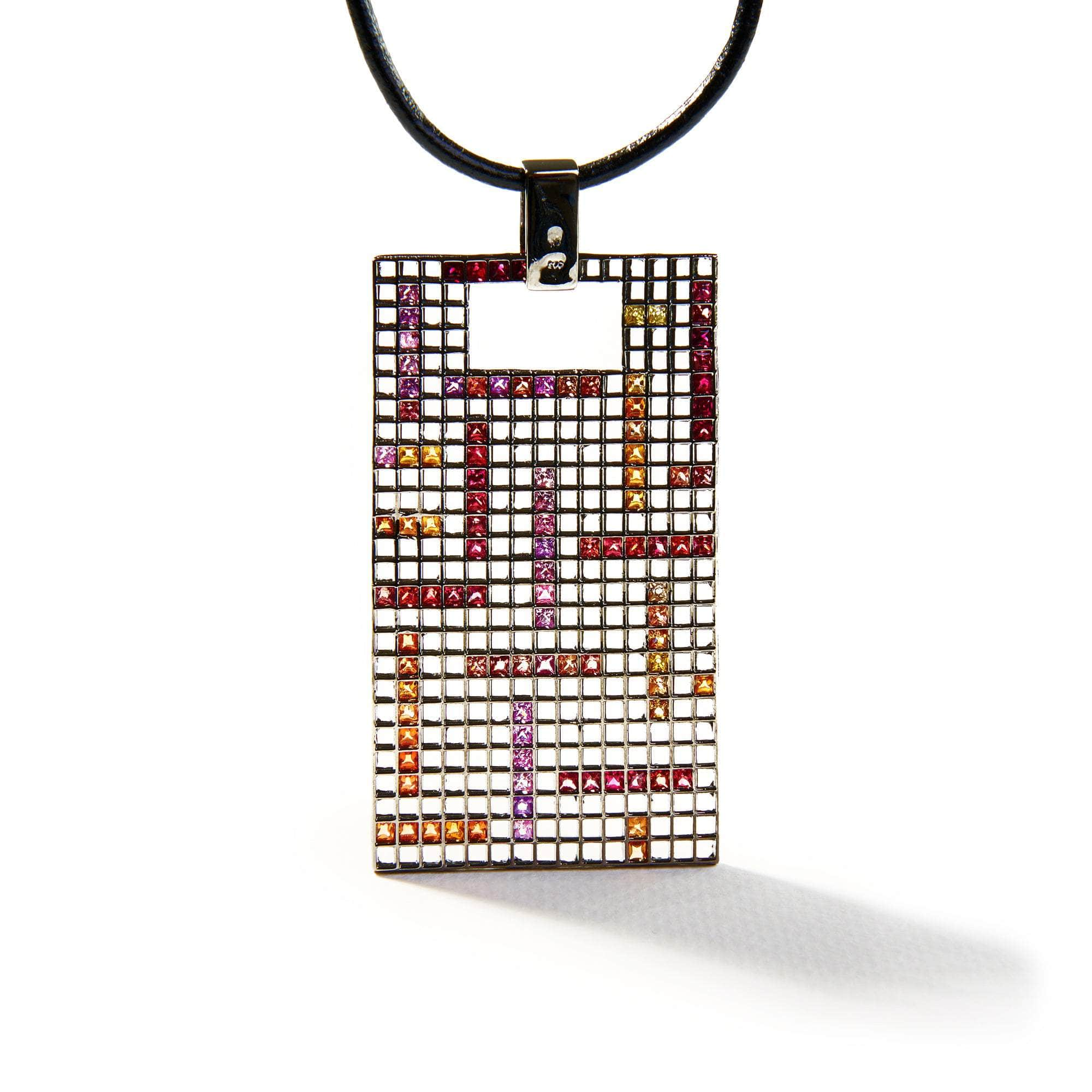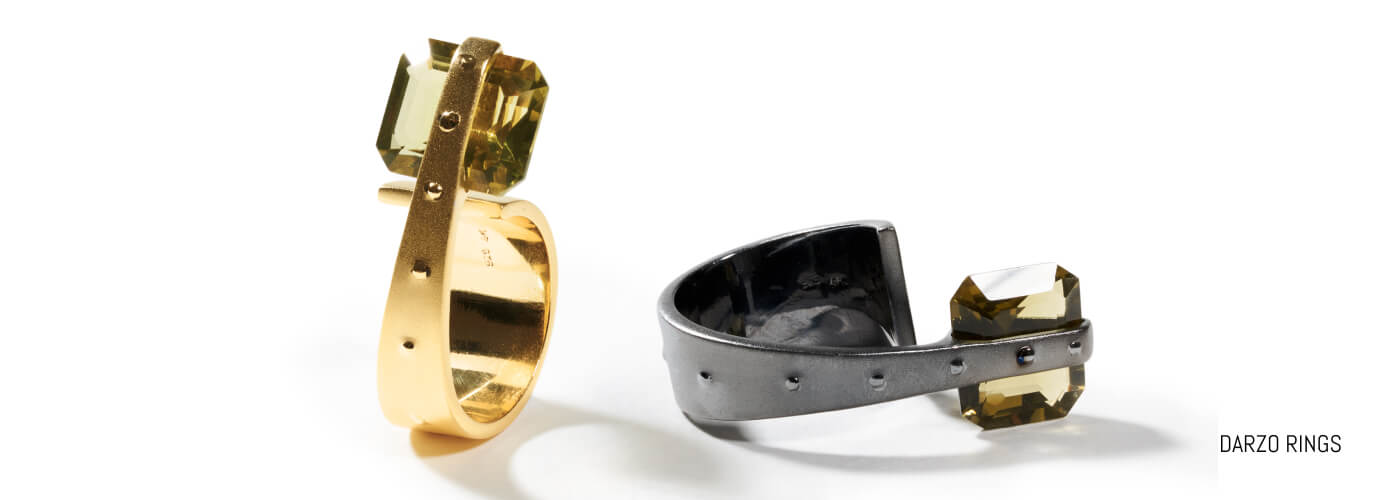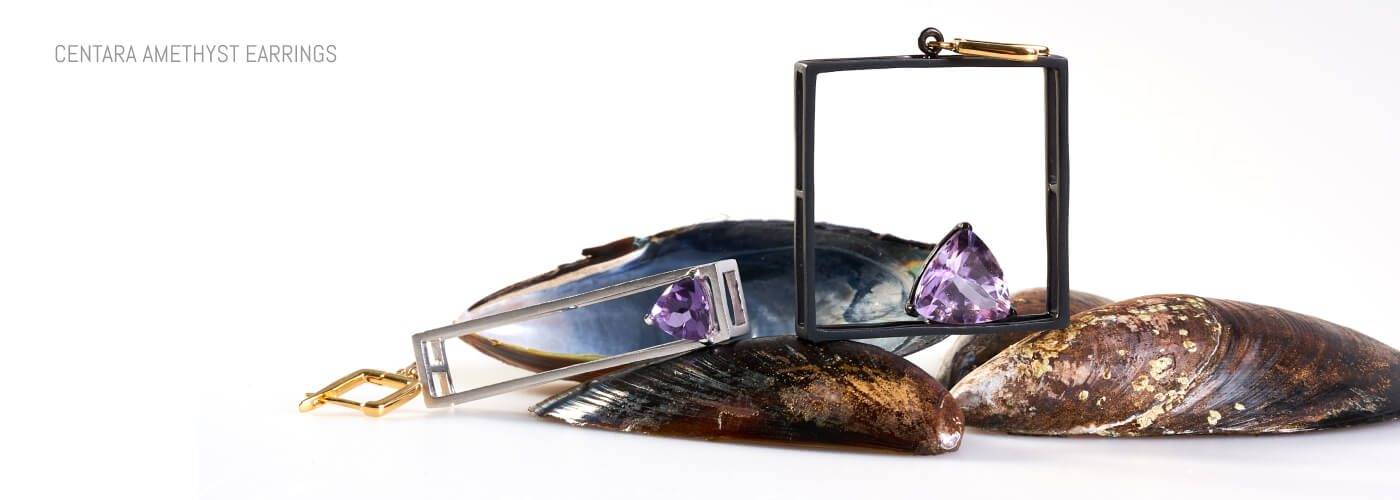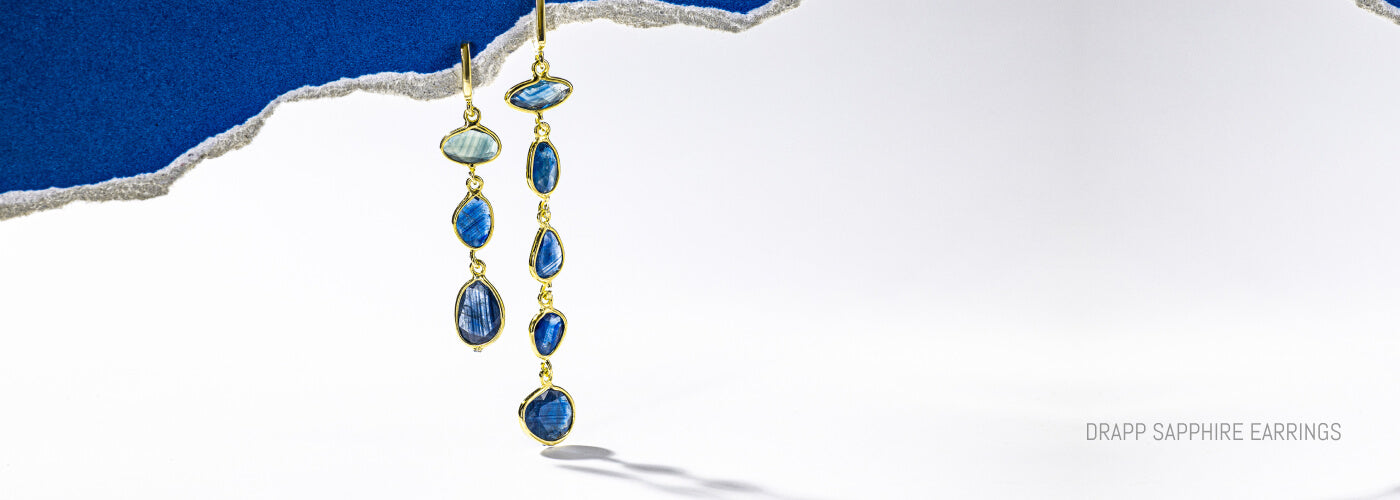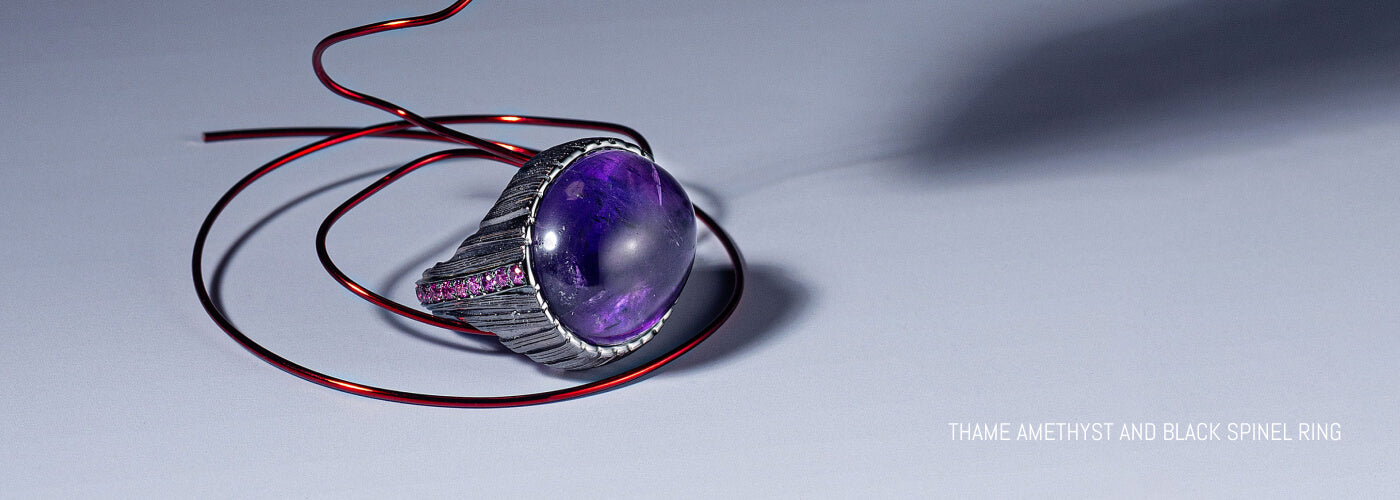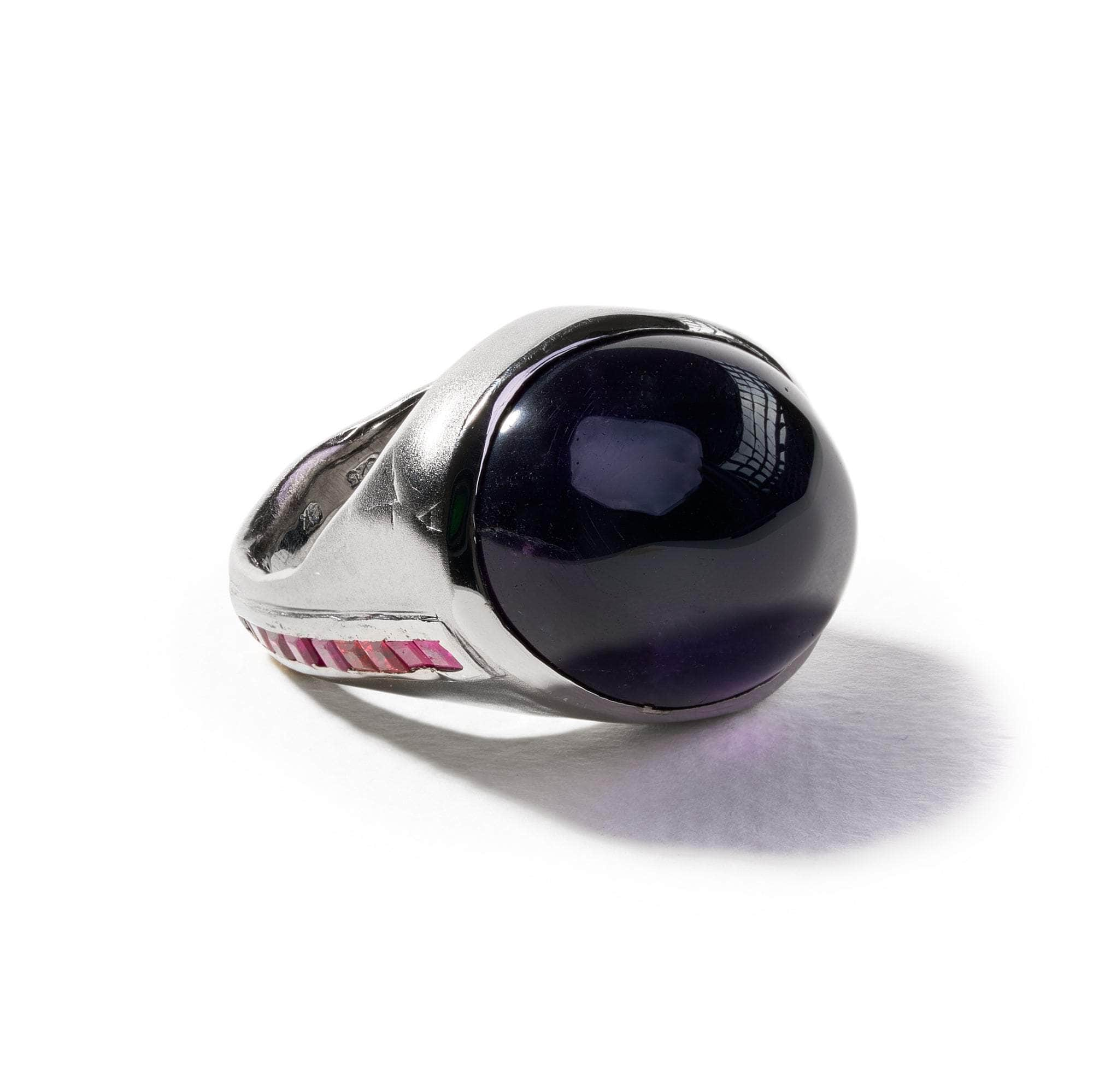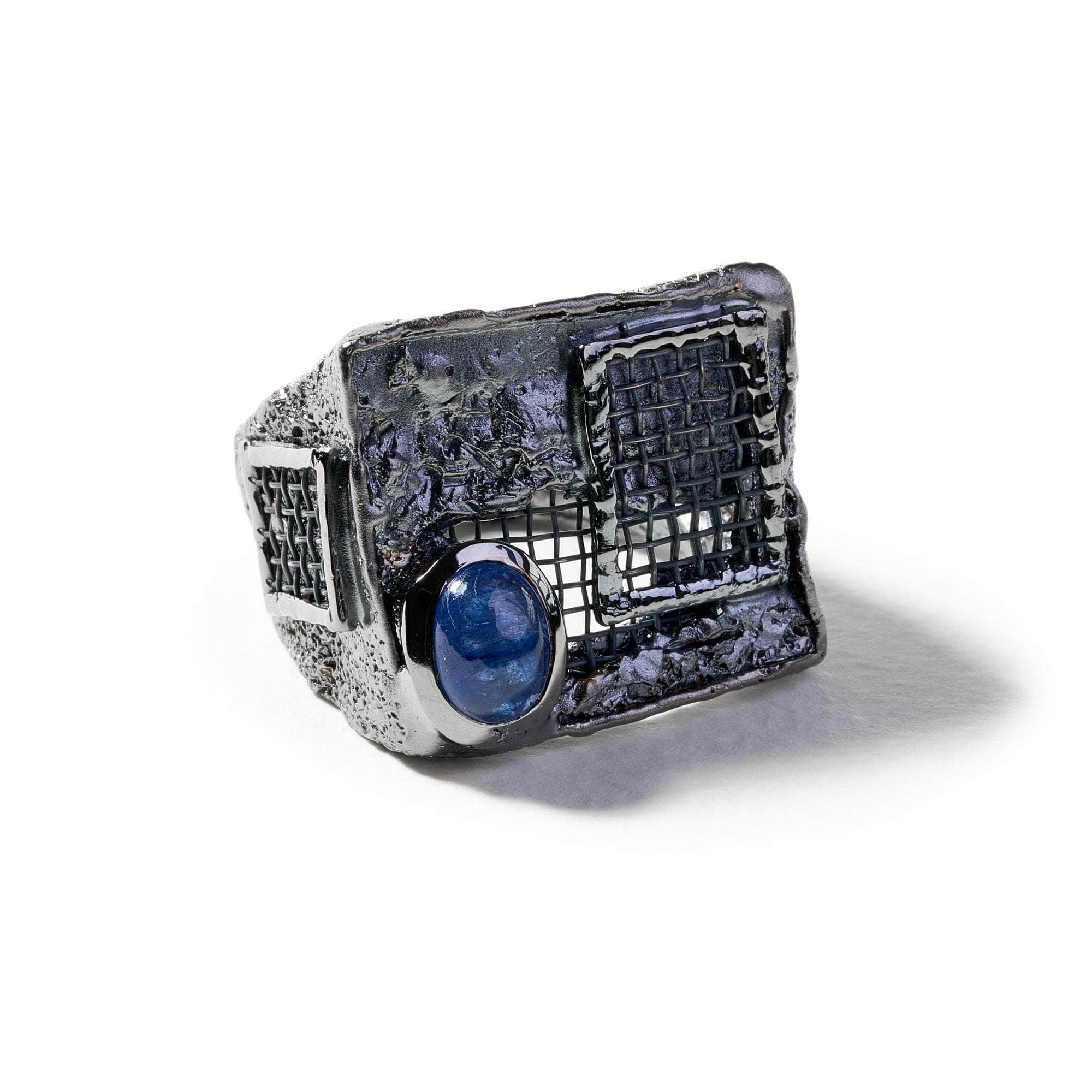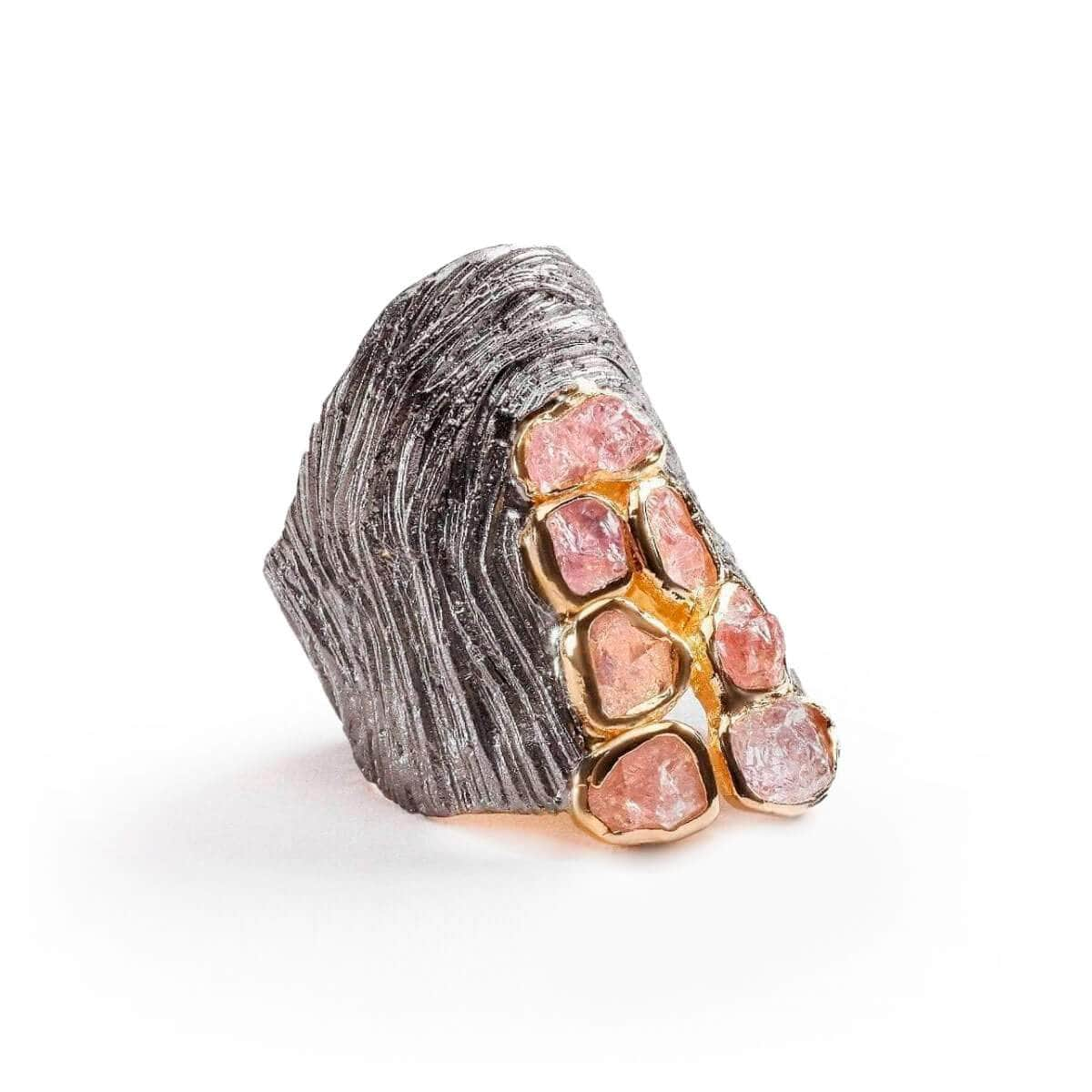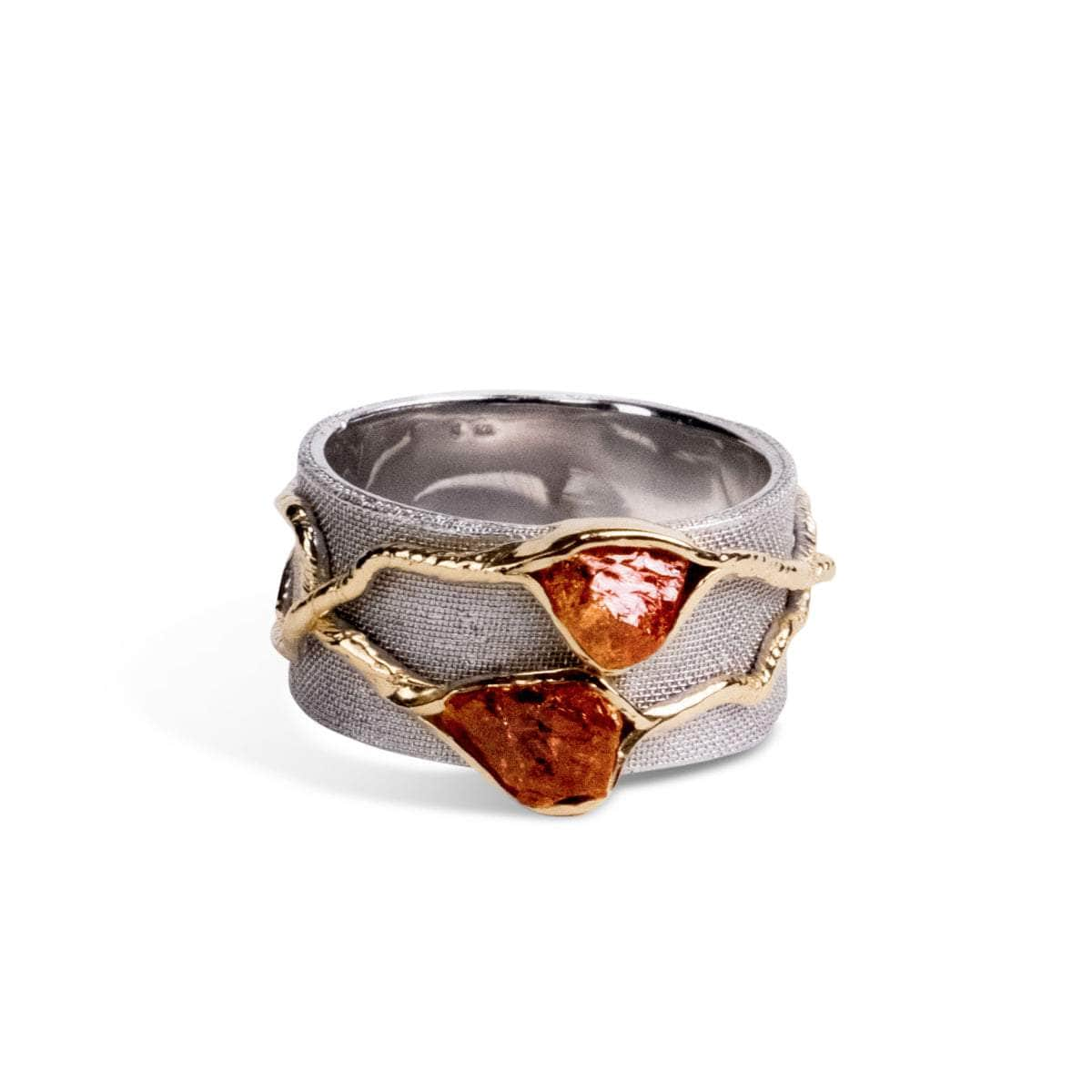Mastering Gemstone Cuts, Shapes, and Sizes
A Technical and Aesthetic Guide for Modern Jewelry Makers and Enthusiasts
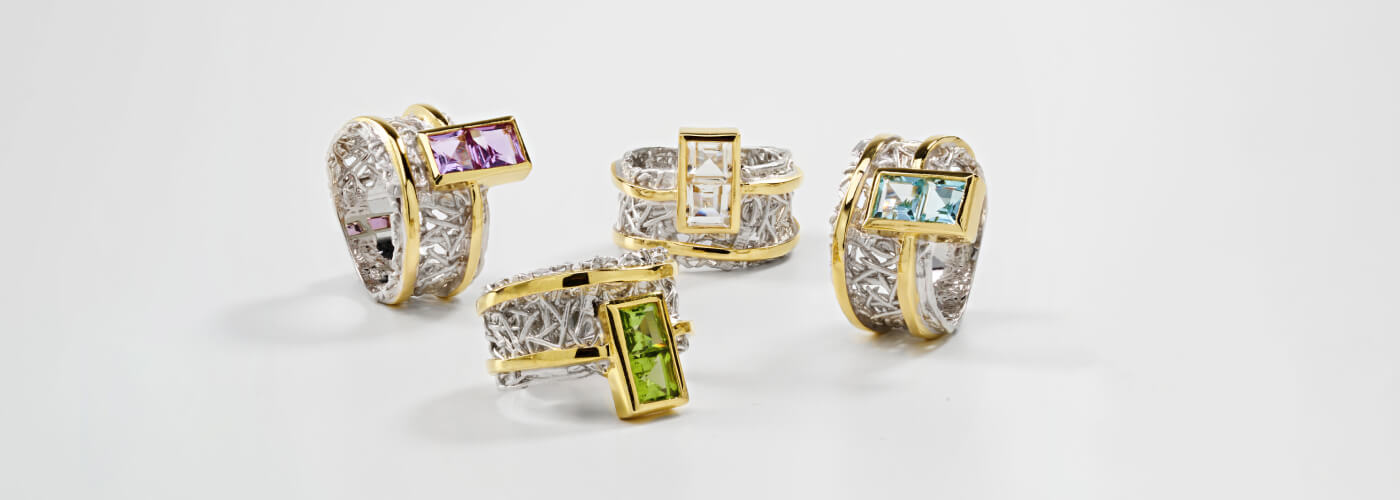
Gemstone cutting, or lapidary, is an art and science that dates back thousands of years, with its origins deeply rooted in ancient civilizations such as Egypt, Mesopotamia, and India. These early lapidarists discovered that cutting and polishing gemstones not only revealed their hidden beauty but also enhanced their intrinsic properties, such as color, clarity, and brilliance. This transformative process elevates a raw stone into a magnificent gem, capturing light and eye alike. Throughout history, the evolution of gem cutting has mirrored advancements in technology and artistic trends, leading to the diverse array of cuts we see today.
The main purpose of gem cutting is to enhance the stone's natural beauty, optimize its optical properties, and adapt it for use in jewelry. By carefully shaping a gemstone, cutters can maximize its brilliance (light reflection), fire (dispersion of light into colors), and scintillation (sparkle as the stone moves). This meticulous craftsmanship ensures that each gemstone can exhibit its full potential, captivating both the wearer and the beholder. The process involves several steps, from selecting the right rough stone to executing precise cuts, each determined by the gem's natural characteristics and intended final shape.
The most common gemstone shapes include round (brilliant cut), oval, pear, marquise, square (princess cut), emerald, and heart. Each shape is chosen for its ability to enhance specific features of the stone, such as color saturation in deeper cuts like the emerald or brightness in shallower cuts like the brilliant. While these shapes have stood the test of time for their universal appeal and versatility, the choice of cut often reflects the gemstone's unique journey from earth to adornment.
Although our anarchist designer, German Kabirski, is famous for using raw, untamed gemstones, we appreciate the art of gem cutting and recognize the skill and precision behind every facet of a cut gem. We are eager to share our insights on this fascinating aspect of jewelry making, hoping to help young jewelers starting their careers and jewelry lovers seeking to deepen their understanding and get the knowledge needed to select gemstones and jewelry with a level of professional expertise.
The World of Gemstone Cuts: From Classic to Rare
The art of gemstone cutting has evolved into a sophisticated craft, offering a myriad of shapes and styles that enhance the natural beauty of precious and semi-precious stones. Each cut, from the most popular to the rare, serves a unique purpose, playing with light to maximize the gemstone’s brilliance, color, and overall appeal. Below, we delve into the diverse array of gemstone cuts available on the market, exploring their characteristics, origins, and applications in jewelry design.
Round Brilliant Cut
The Round Brilliant Cut is arguably the most popular gemstone cut, renowned for its exceptional ability to maximize light reflection. Featuring 58 facets (including the culet and the table), this cut is designed to optimize brilliance and fire. It is a favorite for diamonds but is also applied to other gemstones, making it a versatile choice for a wide range of jewelry.
Princess Cut
The Princess Cut is a modern favorite, known for its square shape and sharp corners. It combines the high brilliance of a round cut with a contemporary square silhouette, making it a popular choice for engagement rings and other fine jewelry. The cut typically features 76 facets, allowing it to catch light beautifully.
Emerald Cut
Characterized by its rectangular shape and stepped facets, the Emerald Cut is a classic choice that emphasizes clarity with its large table and open facets. This cut showcases the gemstone’s color and purity with an elegant, mirror-like effect. It is particularly favored for high-quality stones with fewer inclusions.
Asscher Cut
Similar to the Emerald Cut but in a square shape, the Asscher Cut features larger step facets, a higher crown, and a smaller table. This combination enhances the stone's brilliance. Invented in 1902 by the Asscher Brothers of Holland, it has a vintage appeal that has regained popularity in recent years.
Oval Cut
The Oval Cut offers a unique twist on the round brilliant cut, extending the shape to an elegant oval. It combines the sparkling brilliance of a round cut with a more distinctive silhouette, making it an excellent choice for those looking to maximize carat weight and elongate the appearance of the finger.
Marquise Cut
With its elongated shape and pointed ends, the Marquise Cut is designed to maximize the size appearance of the gemstone. Its origins trace back to the 18th century, named after the Marquise of Pompadour. This cut is known for its boat-like shape, offering a distinctive and dramatic effect.
Pear Cut
Also known as the teardrop cut, the Pear Cut combines elements of both the round and marquise shapes, culminating in a single point with a rounded end. It is an ideal choice for pendants and earrings, offering a soft and feminine silhouette.
Cushion Cut
The Cushion Cut, also known as the "pillow cut," features rounded corners and larger facets to enhance its brilliance. This cut has been popular for over a century, offering a vintage feel with a soft and romantic appeal.
Heart Cut
A symbol of love and affection, the Heart Cut requires great skill to shape the gemstone into a perfect heart, with symmetrical halves and a distinct cleft at the top. This cut is a popular choice for sentimental jewelry pieces, especially engagement rings and pendants.
Trillion Cut
Originally developed in the Netherlands, the Trillion Cut is a triangular shape with rounded corners and varying facet patterns. It is often used as a side stone to complement larger center gems but can also stand alone as a unique and modern main stone.
Fancy Cuts
In addition to the traditional cuts, the gemstone market is rich with fancy cuts, which include any non-standard cut designed to enhance the unique characteristics of a specific gemstone. These can range from modified versions of classic cuts to entirely unique shapes, such as stars, flowers, and custom geometric forms. Fancy cuts allow designers and lapidarists to experiment with light and shape, creating truly one-of-a-kind pieces.
This exploration into gemstone cuts barely scratches the surface of the lapidary world, where the only limit is the cutter’s imagination. Whether classic or rare, each cut offers a unique way to enhance a gemstone’s natural beauty, making it vital for jewelers and enthusiasts to understand the nuances of each. For those embarking on a journey in jewelry making or simply looking to deepen their appreciation of gemstone jewelry, mastering the knowledge of gemstone cuts is an invaluable asset.
Cabochon Cuts: Meet Star Sapphires and Cat’s Eye Chrysoberyl
The Cabochon Cut is one of the oldest forms of gem cutting, featuring a polished, smooth surface without facets. Unlike faceted gems, cabochons are not cut with multiple flat surfaces but are shaped and polished into smooth, rounded forms. This method of cutting predates the development of faceting techniques and was primarily used for softer gemstones or those with optical phenomena that are best displayed without facets. This cut is chosen to highlight the natural beauty of opaque gemstones or those with special features like star sapphires and cat’s eye chrysoberyl, emphasizing depth and color over brilliance.
Historical Insight of Cabochons
The history of cabochon cuts dates back to ancient times when gem cutters realized that certain stones exhibited exceptional beauty when polished into rounded shapes. This technique allowed for the maximization of a gemstone’s color and the optimal display of phenomena such as asterism (star effects), chatoyancy (cat's eye effect), and adularescence (moonstone glow), which are not as visible in faceted stones.
Why Choose Cabochon Cuts?
Cabochon cuts are chosen for several reasons:
Enhancement of Optical Phenomena: They best reveal certain optical effects in gemstones that would not be as
prominent if the stones were faceted.
Preservation of Weight: This cutting style can help preserve more of the
original stone, as less material is removed than in faceting.
Historical and Cultural Significance: Many stones
are traditionally cut as cabochons, following centuries-old customs and beliefs.
Soft or Opaque Stones: Stones
that are too soft, opaque, or included are often cut as cabochons to highlight their color and minimize the
appearance of inclusions.
Gemstones Commonly Cut as Cabochons and Their Optical Effects
Opal
Opals are famed for their "play-of-color," a mesmerizing display of shifting spectral hues that seem to dance within the stone. This phenomenon results from the diffraction of light by silica spheres within the opal's structure. The cabochon cut, with its smooth, rounded surface, maximizes the exposure of these colors, enhancing the stone's intrinsic beauty and creating a three-dimensional appearance of color in motion. Opals come in a variety of types, including black opal, which offers a dark background against which the colors can play, and white opal, which provides a lighter canvas.
Star Sapphire and Star Ruby
Star sapphires and star rubies are precious varieties of corundum that exhibit a striking optical phenomenon known as asterism. This effect appears as a six-rayed star moving smoothly across the surface of the stone under a single light source. The cause is tiny, needle-like inclusions of rutile, aligned in three specific directions. A cabochon cut, with its domed surface, is essential for displaying the star effect prominently. The height and symmetry of the dome are carefully crafted to ensure the star is centrally located and visible from various angles.
Moonstone
Moonstone, a member of the feldspar group, is cherished for its adularescence, a soft, billowy light that seems to float across the stone's surface. This glow is due to the scattering of light by microscopic layers of feldspar within the gem. A high-quality cabochon cut enhances this effect, creating a moon-like luminescence that’s both mysterious and captivating. The best moonstones show a blue sheen against a colorless background, and the cut aims to maximize this phenomenon.
Cat's Eye Chrysoberyl
Cat's eye chrysoberyl is a rare gem that displays chatoyancy, a unique effect resembling the slit eye of a cat. This is caused by parallel fibrous or needle-like inclusions that reflect light in a single, sharp band. The cabochon cut is crucial for chatoyancy to be observed; the gem is cut in such a way that the chatoyant band runs across the middle of the stone, with the apex of the dome aligned with the inclusions. The result is a mesmerizing line of light that shifts position as the stone moves, enhancing the gem’s allure.
Turquoise, Lapis Lazuli, and Amber
Turquoise is prized for its vibrant blue to green colors, often intermixed with veins of matrix. The cabochon cut emphasizes these natural patterns, making each piece uniquely beautiful. The smooth, rounded cut allows for a tactile connection with the stone, showcasing its earthy texture and color variations.
Lapis Lazuli boasts deep, celestial blues sprinkled with pyrite inclusions that resemble stars in the night sky. A cabochon cut highlights these natural characteristics, offering a smooth surface that allows the deep, uniform blue of high-quality lapis to be appreciated in its entirety, along with the contrasting golden specks of pyrite.
Amber, a fossilized tree resin, ranges in color from golden yellow to deep orange. It often contains inclusions such as insects or plant matter, making each piece a window into the ancient past. The cabochon cut not only emphasizes these fascinating inclusions but also maximizes the warm, glowing effect of the resin, inviting a closer look into its depths.
Each of these gemstones benefits uniquely from the cabochon cut, which enhances their inherent optical phenomena or showcases their color and inclusions to stunning effect. This traditional cutting style continues to be a popular choice for highlighting the natural beauty of these gems in jewelry.
The cabochon cut's enduring appeal lies in its ability to reveal the innate beauty of gemstones, emphasizing their natural colors and fascinating optical phenomena. This timeless cut continues to be a popular choice for jewelry makers and enthusiasts who appreciate the unique character it brings to gemstones, transforming them into captivating pieces of jewelry with depth, history, and a touch of mystery.
The Hidden Artistry: Internal and Bottom Cuts in Gemstones
Gemstones are not just admired for their surface beauty; the real magic often lies within, carved out by master lapidaries through internal and bottom cuts. These techniques enhance the stone's internal play of light, creating mesmerizing effects, patterns, and even hidden images.
Intaglio Cuts
Traditionally used in signet rings, intaglio involves carving a design into the flat surface of a gemstone, creating a recessed pattern. When applied internally or at the bottom of a transparent gem, this technique can produce a subtle image or pattern that appears to float within the stone.
Concave Cuts
Unlike the traditional flat facets, concave cuts are curved inward, sculpting the gem's interior surfaces. This innovative approach manipulates light in unique ways, intensifying brilliance and color dispersion. When viewed from above, the gemstone reveals complex patterns and depths that would be impossible with traditional faceting.
Laser Inscriptions and Microscopic Art
With advancements in technology, some gemstones now feature laser-etched inscriptions or microscopic artworks on their bottom facets. These can be anything from serial numbers for identification to intricate designs that add a personal touch. While usually requiring magnification to see, these details add a layer of customization and intrigue.
Cameo Cuts
Although more commonly seen on the surface, cameos can also be intricately carved on the underside of transparent gemstones, presenting a hidden image that only reveals itself under certain lighting conditions or angles. This technique combines the traditional cameo art with the element of surprise, offering a secret beauty to be discovered.
Phantom Crystals
While not a cut per se, phantom crystals are natural formations within gemstones that appear as ghostly shapes or layers, resulting from interrupted growth phases. When polished with the phantom formation near the bottom or inside the crystal, it creates a natural, mysterious image that captivates the viewer.
These specialized cuts and formations within gemstones are not just about enhancing beauty; they're about adding depth, intrigue, and a personal touch to the gem. They speak to the creativity and technical skill of the lapidary, transforming each stone into a piece of wearable art with hidden secrets to unveil. For jewelry makers and enthusiasts alike, understanding and appreciating these internal and bottom cuts opens up a new dimension of gemstone selection and jewelry design, where every gem tells a more profound story.
The Rise of Raw Gemstones in Avant-Garde Jewelry
Recently, the world of ultra-modern, avant-garde jewelry design has witnessed a groundbreaking shift towards embracing raw gemstones in their most natural and unaltered form. This trend, eschewing traditional enhancement and cutting techniques, champions the raw beauty and unique character of gemstones as they are found in the earth. By incorporating these uncut stones into their designs, jewelry makers are not only celebrating the inherent beauty of the natural world but also pushing the boundaries of traditional jewelry aesthetics. This movement towards raw gemstones reflects a growing desire for authenticity, sustainability, and a deeper connection to the natural materials used in our adornments.
As we move further into the 21st century, it's becoming increasingly clear that this trend is not just a fleeting fascination but a significant shift in the jewelry design landscape. Designers and consumers alike are drawn to the unique stories that raw gemstones tell, with their untouched textures, natural inclusions, and undisturbed colors offering a stark contrast to the polished perfection of traditional cuts. This trend is indicative of a broader movement towards individuality, environmental consciousness, and a redefined notion of beauty, signaling that raw gemstones will continue to dominate the avant-garde jewelry market. At the heart of this revolution, we find a celebration of nature's unrefined treasures, promising a future where jewelry not only adorns but also connects us more intimately with the raw, untamed beauty of our planet.
